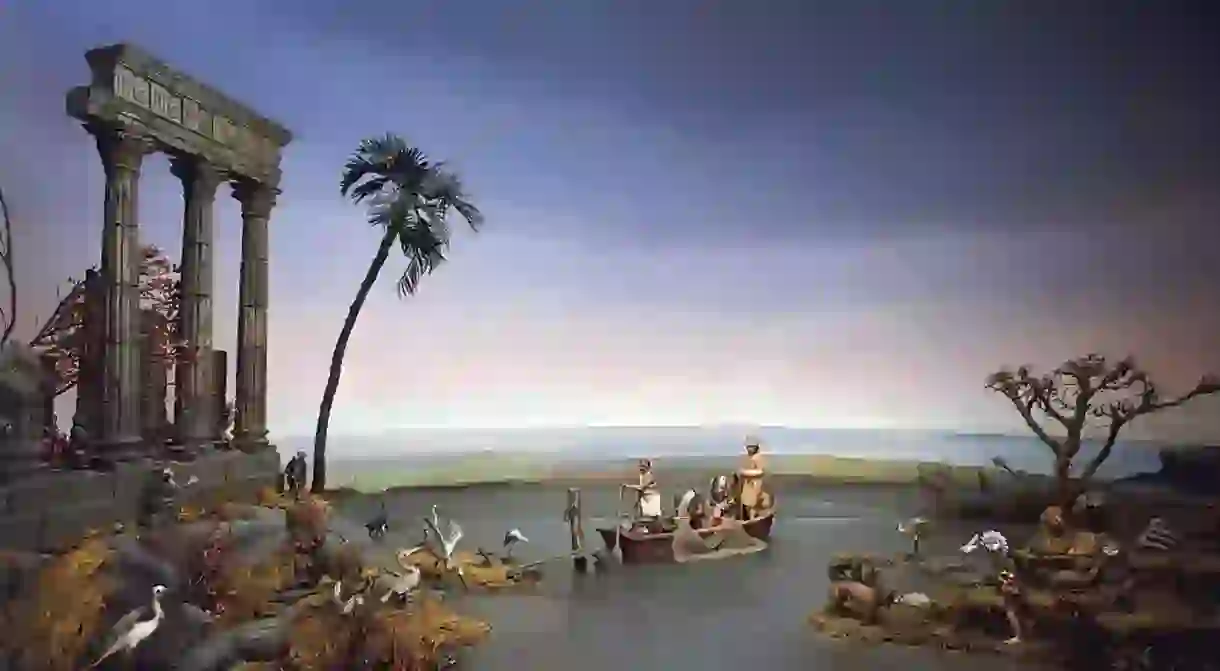A Curator’s Guide to Munich’s Best Museums

Few places are better for museum-hopping than Munich. The Bavarian capital is home to a rich mix of venues hosting Ancient Egyptian relics, Nazi history and fine art. Patrizia Dander, chief curator at Museum Brandhorst, takes Culture Trip behind the scenes of Munich’s best museums.
With over 80 different museums to choose from, Munich is a place where you can visit royal palaces, view priceless collections of contemporary art and see art from several millennia within walking distance. The city’s Kunstareal art quarter, one of the most notable cultural districts in Europe, contains a total of 18 museums and more than 40 art galleries.
While it can be challenging to know where to start, Patrizia Dander is here to help narrow it down. Patrizia is responsible for curating and developing programmes at Museum Brandhorst, one of Munich’s top contemporary art museums. Here are her recommendations for Munich’s must-visit museums.
Kunstverein München
Museum
Founded in 1823, Kunstverein München is the oldest public art institution in Munich. “And still, this is the place to encounter the most recent developments in art,” Patrizia says. “It’s always surprising, always inspirational.” The non-profit art association focuses on contemporary art, showcasing solo and group exhibitions from international artists with an eye for local context. The gallery space hosts regular exhibitions, lectures, artists talks, symposia, film screenings and publications. Kunstverein München is located in the Hofgarten, just a stone’s throw from the Residenz Palace.
Museum Brandhorst
Building, Museum

Haus der Kunst
Art Gallery, Museum

Over the last few decades, the museum – founded during the Third Reich as the House of German Art – has developed into a truly global art institution. According to Patrizia, the thriving contemporary art exhibitions by artists from all around the globe and site-specific installations in its middle hall – impressive both in size and ambition – make Haus der Kunst a must-visit. She also recommends grabbing a drink at the museum’s Goldene Bar, where the innovative creations have won several international bar prizes in recent years.
Alte Pinakothek
Museum

Pinakothek der Moderne
Art Gallery, Building, Museum

The Pinakothek der Moderne focuses on everything from expressionism to classical modern art up to contemporary art. Here, four completely independent collections are housed under one roof: the Staatliche Graphische Sammlung with its prints and drawings collection, the Architecture Museum, the Neue Sammlung Design Museum (considered the world’s oldest design museum) and the Sammlung Moderne Kunst with its modern and contemporary art masters. While the sheer size of the collection can be a little overwhelming, your visit becomes more digestible if you think of it as four museums in one and tackle each accordingly.
Lenbachhaus
Museum, School

Franz Marc Museum
Museum

Up until his death as a soldier in World War I, German Expressionist painter Franz Marc spent much time in the Bavarian Alpine foothills in and around the lakeside village of Kochel am See. Today, the museum hosts exhibits dedicated to his artwork, along with work from his contemporaries and other notable artists of the 20th century in both permanent and temporary exhibitions. Situated by the beautiful Kochelsee, the location is worth a trip in and of itself and can be easily reached by train from Munich.
NS Dokumentationszentrum
Museum

An absolute must-visit is the NS Dokumentationszentrum, a documentation centre for the history of National Socialism. Inaugurated in 2015 on the former grounds of the party headquarters, it has quickly become a landmark in Munich, the city where the Nazi Party (NSDAP) was founded. “There’s an excellently researched and very informative permanent exhibition display – in German and English – that examines the origins and the rise of National Socialism in Munich, the city’s role within the terror system and the difficult process of coming to terms with the past since 1945,” Patrizia says. “Its importance in view of the current rise in right-wing extremism around the globe cannot be stressed enough.”
Valentin Karlstadt Musäum
Museum

The Valentin Karlstadt Musäum is an authentic local curiosity dedicated to entertainers Karl Valentin and Liesl Karlstadt. “If you want to get a sense of the Bavarian humour, I definitely recommend the Valentin Karlstadt Musäum,” says Patrizia. “Munich comedian Karl Valentin and his partner Liesl Karlstadt are real legends in this part of the world – and beyond. Their humour is said to have influenced figures such as Bertolt Brecht and Samuel Beckett.” The museum is located in the Isartor, one of the four main gates of the old city wall. It’s a quirky place – here, clocks run counterclockwise and in true Valentin spirit, free entry is granted not only to kids ages six and under, but also to 99-year-olds accompanied by their parents.
Bayerisches Nationalmuseum
Museum

Founded in 1855, the Bayerisches Nationalmuseum focuses on visual arts and cultural history. Special collections such as the displays of porcelain, ivory, musical instruments and weapons show a colourful picture of both Bavarian and European history. As Patrizia notes: “The best thing to see in Munich in December – besides the Christmas markets – is the presentation of beautiful Nativity scenes at the Bayerisches Nationalmuseum. This historical collection is truly unique in the world, both in scale and quality: it includes more than 60 bustling Christmas scenes made in the Alps and in Italy between 1700 and the early 20th century.”
Looking for somewhere to stay in Munich? Check out the best hostels in the city, bookable with Culture Trip.













